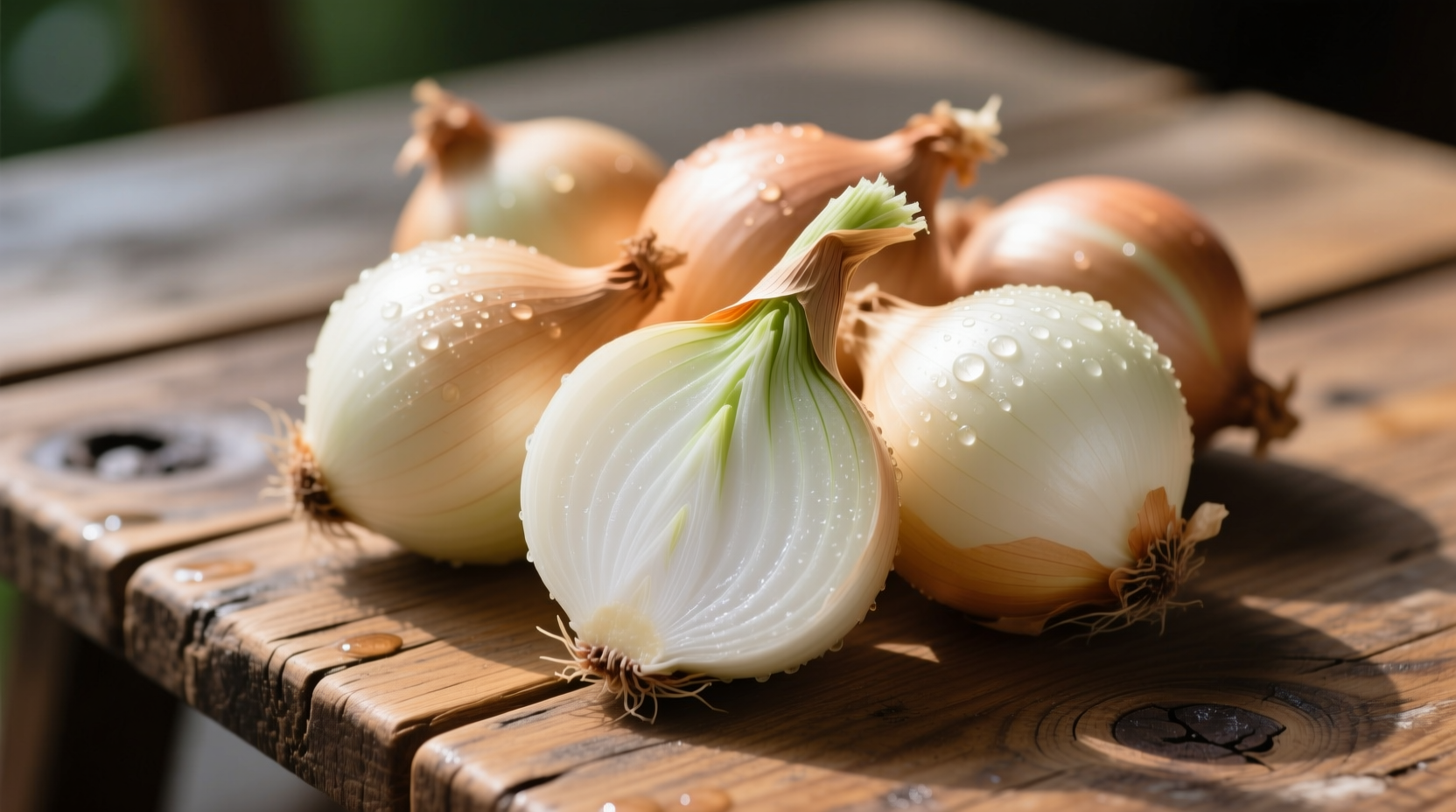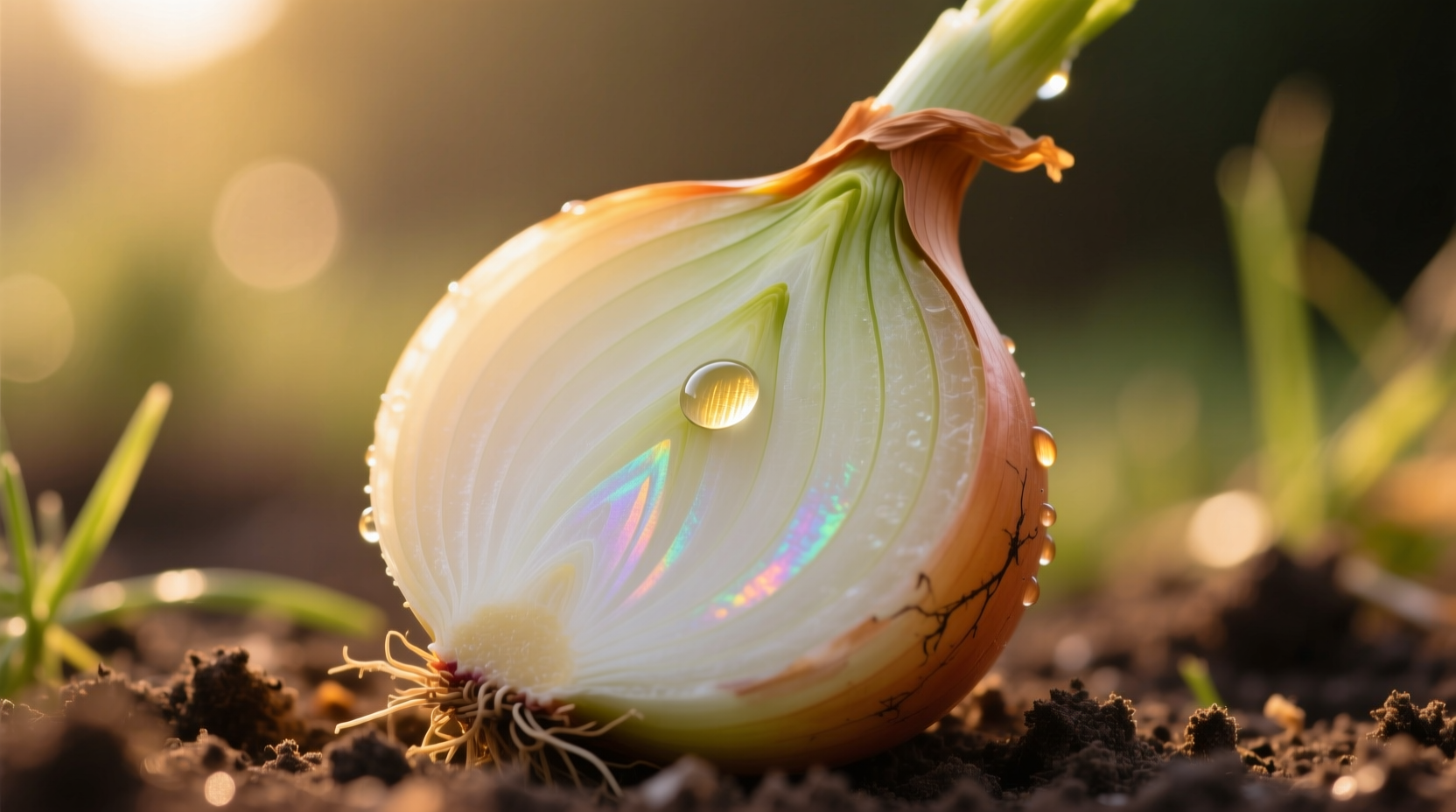Vidalia onions are exceptionally sweet due to the low-sulfur soil in their specific Georgia growing region, which prevents the formation of the pungent compounds found in regular onions. This unique agricultural condition creates onions with a sugar content up to 25% higher than standard yellow onions, making them enjoyable to eat raw without the typical onion burn.
What Makes Vidalia Onions Legally Special
Unlike generic "sweet onions," Vidalias are protected by federal law under the USDA Marketing Order. Only onions grown in 20 specific Georgia counties can legally bear the Vidalia name. This geographical indication ensures consistent quality and authenticity, similar to how Champagne must come from France's Champagne region.
The Science Behind the Sweetness
The magic happens in Georgia's sandy, low-sulfur soil found in the coastal plain region. Regular onions develop pungent sulfur compounds that create that familiar eye-watering burn. Vidalia's growing environment produces significantly less of these compounds while allowing natural sugars to develop fully. According to research from the University of Georgia College of Agricultural and Environmental Sciences, Vidalias contain approximately 12.5% sugar by weight compared to 5-7% in standard yellow onions.
| Onion Type | Sugar Content | Sulfur Compounds | Best Culinary Use |
|---|---|---|---|
| Vidalia | 12-14° Brix | Very Low | Raw applications, salads, sandwiches |
| Walla Walla | 9-11° Brix | Low | Grilled, caramelized dishes |
| Maui | 10-12° Brix | Low | Raw preparations, salsas |
| Yellow Onion | 5-7° Brix | High | Cooking, soups, stews |
Vidalia Onion Timeline: From Humble Beginnings to Protected Status
The story of Vidalia onions began in 1931 when farmer Mose Coleman planted onions in Toombs County, Georgia, and discovered their unusual sweetness. By the 1940s, local farmers were selling these uniquely mild onions at the Vidalia city market, giving them their name. The Vidalia Onion Committee was established in 1986 to protect the brand, and in 1989, the USDA granted federal marketing order protection. In 1990, Vidalia became Georgia's official state vegetable, cementing its cultural and economic importance to the region.
How to Select Perfect Vidalias at the Market
Look for these quality indicators when shopping:
- Firmness: Should feel solid with no soft spots
- Skin: Tight, papery skin without mold or sprouting
- Neck: Should be completely closed (an open neck indicates aging)
- Weight: Should feel heavy for their size
Peak season runs from late April through August, when you'll find the freshest, sweetest bulbs. During off-season, look for properly stored Vidalias in climate-controlled sections of grocery stores.

Storage Secrets for Maximum Freshness
Proper storage dramatically extends Vidalia shelf life:
- Airflow is critical: Store in mesh bags or open baskets, never plastic
- Temperature matters: Keep at 45-55°F (7-13°C) with 65-70% humidity
- Separate from potatoes: Ethylene gas from potatoes causes premature sprouting
- Refrigerate only when sliced: Whole Vidalias lose texture in cold temperatures
When stored properly, fresh Vidalias last 2-3 weeks at room temperature. Sliced onions should be sealed in airtight containers and used within 7 days.
Culinary Applications That Showcase Their Sweetness
Vidalias shine in applications where regular onions would overpower:
- Raw preparations: Thinly sliced in burgers, sandwiches, or salads
- Pickling: Quick-pickled Vidalias add sweet-tangy complexity to tacos and charcuterie boards
- Caramelizing: Cook low and slow for naturally sweet onion jam (takes 30-40 minutes)
- Grilling: Slice 1-inch thick, brush with olive oil, and grill for sweet, smoky flavor
Professional chefs often use Vidalias in applications where sugar would normally be added, leveraging their natural sweetness to reduce added sugars in recipes. Their mild flavor also makes them ideal for raw onion applications in dishes where regular onions would be too harsh.
Smart Substitutions When Vidalias Aren't Available
While nothing perfectly replicates Vidalias, these alternatives work in a pinch:
- Walla Walla onions: Best substitute during summer months (similar sweetness profile)
- Maya Sweet onions: Good alternative with slightly more pungency
- Red onions soaked in cold water: Reduces sharpness for raw applications
- Leeks: For cooked dishes requiring mild onion flavor
When substituting, remember that regular yellow onions contain nearly three times more pungent compounds. To approximate Vidalia's mildness, soak sliced yellow onions in cold water for 15 minutes before using raw.
Frequently Asked Questions
Why are Vidalia onions so much sweeter than regular onions?
Vidalia onions grow in Georgia's low-sulfur soil, which prevents the formation of pungent sulfur compounds found in regular onions. This unique soil composition allows natural sugars to develop fully, resulting in onions with up to 25% higher sugar content and minimal eye irritation.
How can you tell if a Vidalia onion is fresh and high quality?
Look for firm bulbs with tight, papery skin, a completely closed neck, and substantial weight for their size. Avoid any with soft spots, mold, or sprouting. The best Vidalias feel heavy, have no visible blemishes, and emit a faint sweet aroma when rubbed.
What's the best way to store Vidalia onions for maximum freshness?
Store whole Vidalias in a cool, dark place with good airflow (mesh bags work perfectly) at 45-55°F with 65-70% humidity. Never store them in plastic bags or near potatoes. Properly stored, they'll stay fresh for 2-3 weeks. Sliced onions should be refrigerated in airtight containers and used within 7 days.
Can you substitute Vidalia onions in recipes calling for regular onions?
Yes, but with adjustments. Vidalias caramelize faster due to higher sugar content, so reduce cooking time by 25%. In raw applications, you may need to increase quantity slightly as Vidalias have milder flavor. For dishes requiring onion sharpness (like French onion soup), blend Vidalias with 25% yellow onion for balanced flavor.











 浙公网安备
33010002000092号
浙公网安备
33010002000092号 浙B2-20120091-4
浙B2-20120091-4